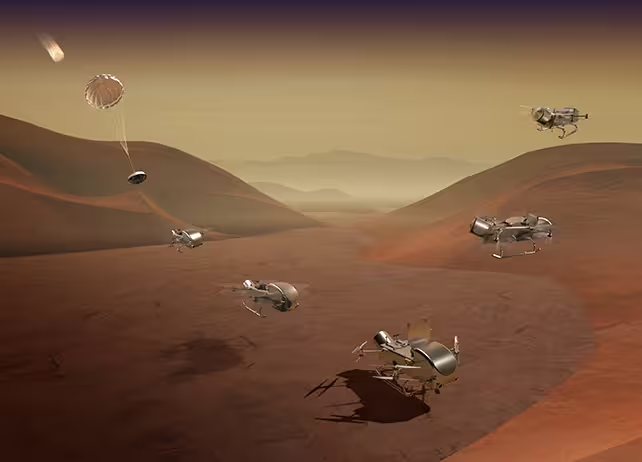5 Minutes
Introduction: An Atmospheric Enigma on Titan
Titan, Saturn’s largest moon, continues to captivate planetary scientists with its Earth-like qualities and complex atmosphere. Recent research has uncovered a baffling phenomenon: Titan’s dense, nitrogen-rich atmosphere shifts or "wobbles" relative to its surface in a manner reminiscent of a gyroscope, presenting a mystery without any clear explanation so far. This periodic motion, synchronized with Titan’s lengthy seasons, could hold keys to understanding not just Titan itself but also the broader dynamics of planetary atmospheres—offering intriguing parallels to Earth’s climate system.
The Science Behind the Discovery
A research team from the University of Bristol, UK, embarked on an extensive study by analyzing thirteen years of infrared light data collected by spacecraft orbiting Saturn. These infrared observations allowed the scientists to determine the temperature and composition of Titan’s atmosphere over time. By closely tracking these properties, the team detected periodic movement indicating that the atmosphere is not statically aligned with the moon’s surface but instead oscillates, shifting its tilt direction while maintaining alignment to a fixed point in space.
As planetary scientist Dr. Lucy Wright explains, “Titan’s atmosphere seems to behave like a gyroscope, independently stabilizing itself rather than being locked to the moon’s surface. Even more intriguingly, the extent of this atmospheric tilt varies with Titan’s seasons.” This behavior defies current expectations, prompting further scrutiny into the moon’s climate, orbital mechanics, and atmospheric chemistry.
Key Findings and Ongoing Mysteries
The team discovered that while the degree of the tilt changes throughout Titan’s seasons—which last almost three decades each, due to Titan’s 29.5-Earth-year orbit around the Sun—the direction of this tilt does not. It remains persistently aimed at a fixed spot, resisting influence from both Saturn and the Sun. Planetary scientist Dr. Nick Teanby highlights the mystery: “What’s truly perplexing is that, despite seasonal changes in magnitude, the tilt direction stays anchored in space. If it were influenced by Saturn or the Sun, we’d have some obvious clues. Instead, we’re faced with a new layer of complexity.”
One theory under consideration is that a massive impact event in Titan’s distant past could have set this atmospheric wobble in motion, potentially altering the moon’s rotational dynamics and triggering the persistent gyroscopic effect. However, this remains speculative, and further data will be necessary to reach definitive conclusions.

Implications for Future Exploration and Science
Understanding Titan’s atmospheric behavior is not only a scientific curiosity but also vitally important for the success of upcoming missions. NASA’s Dragonfly drone mission, scheduled to arrive at Titan in 2034, will require precise knowledge of atmospheric dynamics to navigate and land safely amidst Titan’s turbulent winds. As Dr. Wright emphasizes, “Accurate models of Titan’s atmospheric motion are essential for mission planners, ensuring Dragonfly can operate effectively once it reaches this unique world.”
The broader implications of this work touch on planetary formation, atmospheric physics, and even the potential for habitability. Titan is the only moon in our solar system with a thick, persistent atmosphere and active hydrological cycles, including methane lakes and rainfall. Studying these phenomena deepens our understanding of how life might originate and persist under similar conditions elsewhere in the universe.
Dr. Conor Nixon from NASA Goddard Space Flight Center concludes, “The way Titan’s atmosphere acts like a spinning top, seemingly disconnected from the solid moon below, raises far-reaching questions not only for Titan but also for modeling atmospheric physics on Earth and other worlds.”
Conclusion
Titan’s atmospheric gyroscope is a striking reminder that our solar system remains full of surprises. Continued observations and future missions like Dragonfly promise to reveal more about this enigmatic moon, potentially unlocking new insights into planetary climates, the origins of atmospheric dynamics, and even the conditions necessary for life beyond Earth. As Titan draws planetary scientists and engineers into its maze of mysteries, it stands as one of the solar system’s most promising frontiers for both discovery and exploration.
Source: doi


Leave a Comment